If you want to know how to make a cross from wood, this blog post will give you the most comprehensive answer because I have described the ten most popular wood joinery methods that you can use to make a wooden cross.
Also, I designed 3D models for each joinery method to give you the clearest pictures, which are freely available to download. I will explain them practically with a step-by-step guide. So, without wasting much time, let’s discuss how to make a cross out of wood in 10 ways.
How to Make a Wooden Cross – Guide
Whether you want to make a small wooden cross like a necklace or a large one like 6 feet, you can do that easily with the help of these methods. Because these wood joinery methods are the fundamentals of woodworking. I have shared ten wood joinery methods that allow you to make a cross from wood. You can choose whichever you find easy and convenient.
Let’s start with the most basic one!
You can also watch my YouTube video here for more detailed guides and instructions.
1. Overlap Lap Joint
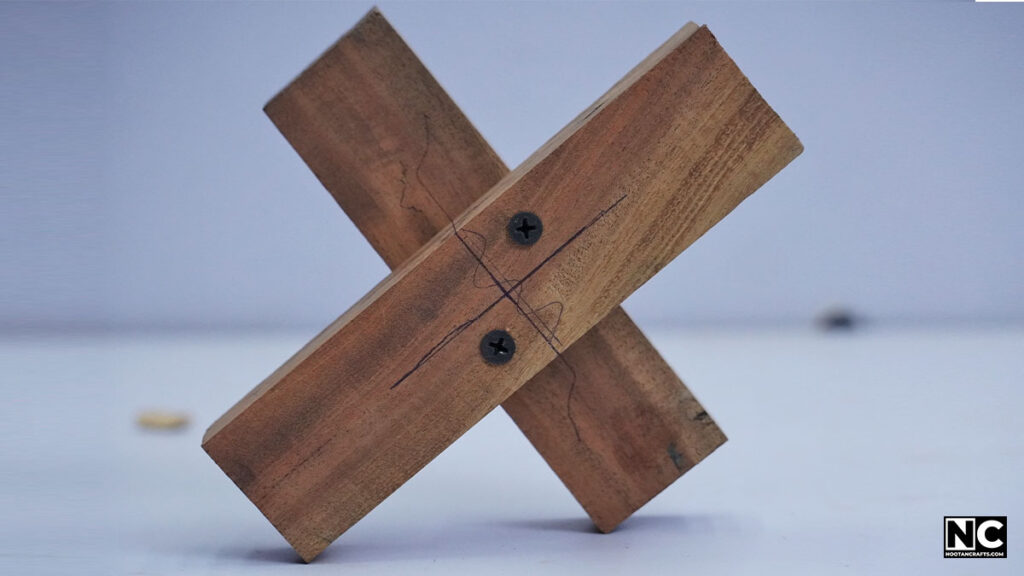
It is the most straightforward wood joinery method you can use to make a cross. Grab two wooden planks according to your project requirements. I am using a 1.5-inch thick wood.
- Place one piece of wood on top of the other.
- Choose the position wherever you want; if you want a perfect cross, make sure both pieces are equal in length.
- Now, mark the middle point in each piece and align it while joining.
- In our case, we are making a cross, so we must also maintain a right angle.
- To secure the joints, you can use nails or screws. That’s it, you did it.
2. Notched Overlap Lap Joint

There is only one difference in this joint: we have to make a notch in either piece so the other one will snugly fit into it.
- To do that, place one piece on top of the other where you want to join them. Because we are making a cross, we will join it in the middle.
- Mark the middle point in each piece. I placed one piece on the other while aligning the center point and maintaining the right angle.
- I marked the notch area on either piece. We need to remove that part now.
- First, we can make two cuts close to our notch limit. I used a circular saw to make those cuts. Yes, we can also use a hand saw, which I will use in the 6th method.
- Now, we can remove the wood from our notch area with a chisel. Remember that the joint must require some force to fit; don’t make it loose.
- After finishing the notch, push the other piece in while maintaining the center lines.
- If it fits properly, you can finally apply wood glue and push it with a hammer or clamp. You have mastered the Notched Overlap Joint.
3. Cross-half Overlap Joint

The main difference between the full and half overlap joint is that you have to cut the notch in both pieces. This way, they will fit together completely.
- To do that, mark the middle point on both pieces.
- Now, place one piece on the other, keeping the right angle and center in mind. Mark the notch area on both pieces.
- Set the depth of the circular saw blade to half of the wood piece. Make multiple passes through the notch area and remove the unwanted material. Try not to cut beyond the limit, as this will loosen the joint.
- Now remove the burrs with the help of a chisel and smooth the shoulder, and Check area.
- Make sure your chisels are sharp. Repeat the process for the second plank and check whether they fit.
- After that, align the notch area of both pieces and push with the mallet.
- If they fit correctly, remove them, and finally, apply wood glue and secure them permanently.
4. Edge Half-lapJoint
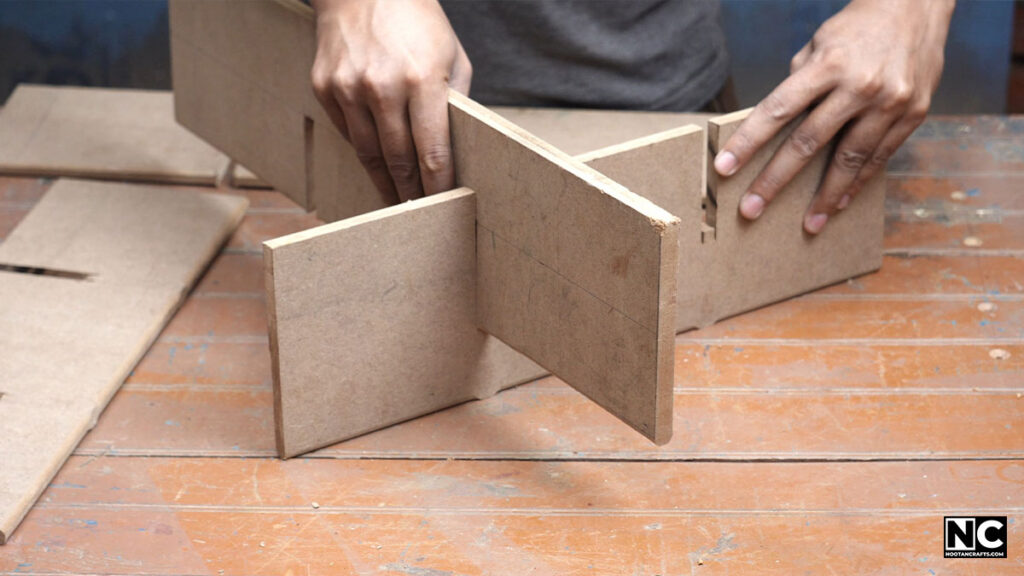
It’s the same as the cross-over half joint; the only difference is that you have to cut the edges of the pieces. For example, a couple of months ago, I made these desk organizers for my cupboard and computer desk drawers. This cross-joinery method is common for making boxes, drawers, and wall organizer shelves.
5. Angled Cross Half-lap Joint

This joint comes in handy if you want to connect two wood pieces at an angle.
- Place one piece on the other at your desired angle and mark the lines for cutting notches.
- Make multiple cuts with a circular saw to remove the extra material.
- Use the chisel to smooth the notch’s shoulder and check.
- Repeat with another piece and check for fit. Finally, glue and join them.
Bravo, you made the angled cross half-lap joint.
6. Halved Molded Joint
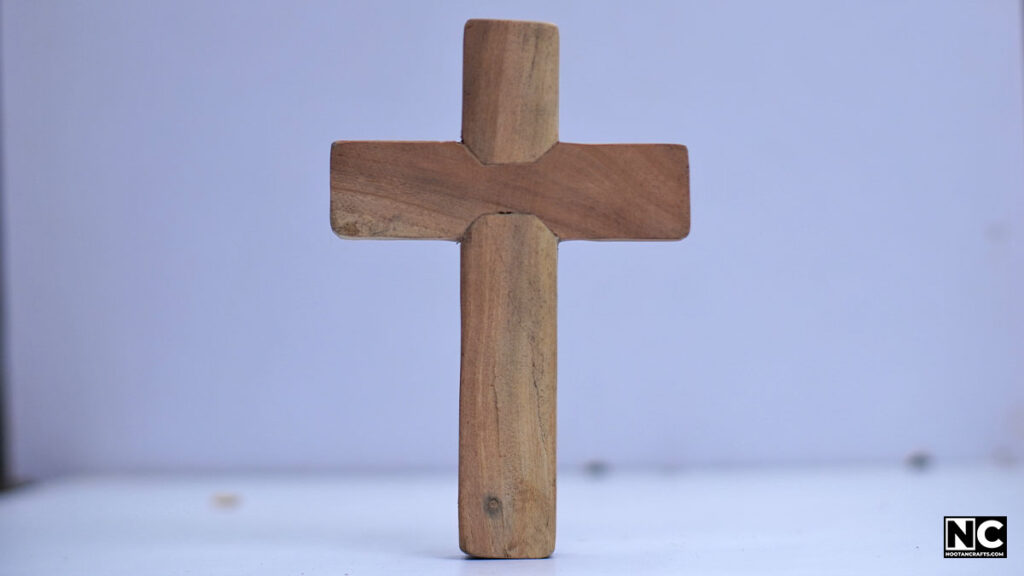
We can talk forever; there are many joint types, and it’s almost impossible to explain all of them. However, I am telling you the most popular ones that are easy, strong, and practical.
This joint is my favorite because it’s not just sturdy but also looks appealing, which adds a bit of sophistication to the joint.
Here is the diagram of how you can make it. You can download my plans for free from the description. All other steps are the same. Additionally, I have smoothened the wood with sanding, which looks a bit better. I know my joint isn’t exceptional, but I tried my best to explain.
Here are some more joinery methods for joining two pieces of wood and making a cross.
7. Cross Dovetailed Half Lap Joint

The cross-dovetailed half-lap joint is perfect for furniture where precision and strength are paramount.
This joint, marrying dovetails and half-lap techniques, offers not just stability but also an elegant touch. It’s ideal for projects demanding a blend of craftsmanship and structural integrity.
8. Cross Half Lap Joint with One Side Dovetailed
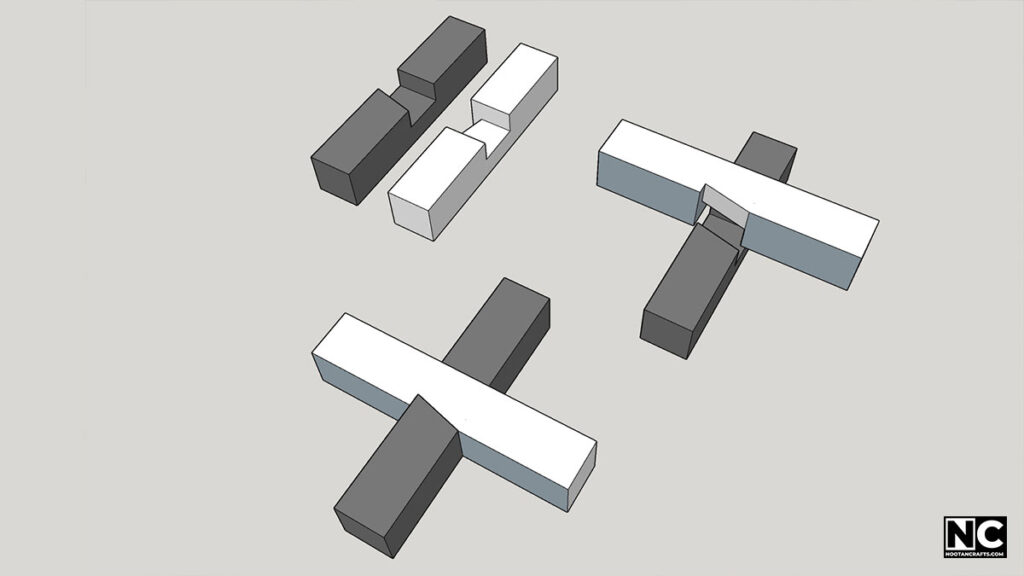
Innovative and visually appealing, this joint is excellent for projects requiring a touch of uniqueness. The single dovetailed side adds flair while maintaining structural strength. Perfect for woodworking pieces where innovation and aesthetics are key.
9. Carpenter Tie Joint

The Carpenter Tie Joint is the choice when you want your woodworking to tell a story. Shaped like a tie, it adds character to any project. Ideal for pieces that need more than just functionality—a touch of personal style. For demonstration, first, I chose this joint but mistakenly made a Halved molded joint, but now you know it.
10. Cross-Halving Joint with Housed Corners
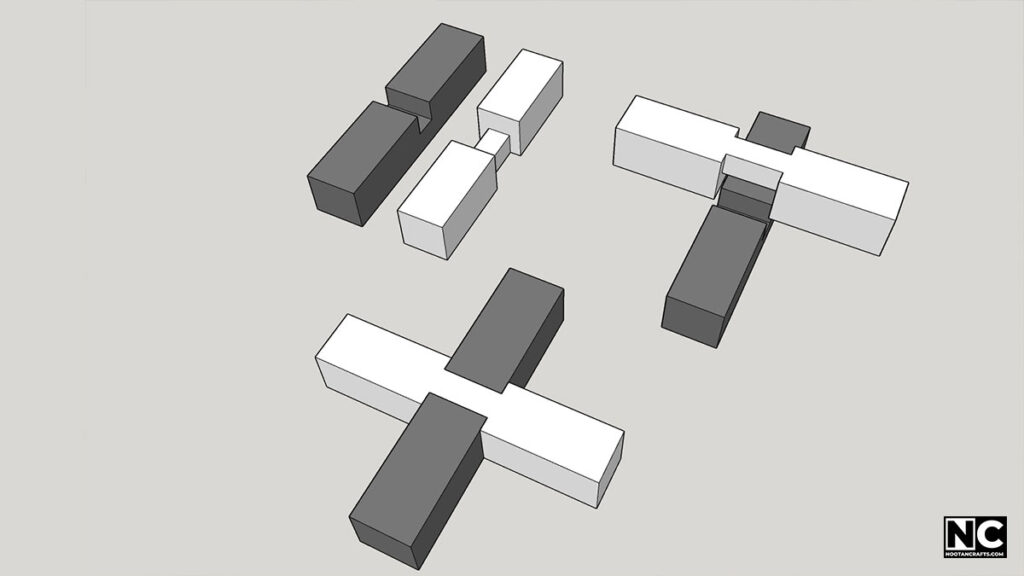
For projects that demand both strength and visual appeal, the Cross-Halving Joint with Housed Corners is the answer. Perfect for creating sturdy structures with a touch of elegance. It’s where craftsmanship meets eye-catching design in woodworking.
How to Make a Cross from Wood – Conclusion
There are many more ways to make a cross from wood, and it’s almost impossible to explain all of them. I have described the most popular and easy ones. If you still have any questions or suggestions, please write your comments. You can also watch my YouTube video for more details. Thank you so much for your precious time. Keep crafting!

